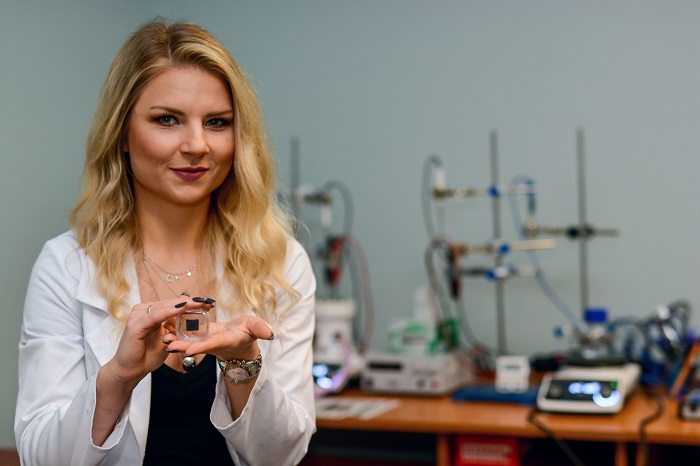
A team initiated by a researcher from the Military University of Technology has obtained very good efficiency of photoelectrocatalytic water splitting. The materials she developed can be used in the production of hydrogen from water under the influence of light. This is a promising alternative to the currently used methods of obtaining this energy carrier, the university reports.
'In ideal conditions, photoelectrochemical and photocatalytic hydrogen generation (without applying an external voltage) is one of the most ecological methods of obtaining hydrogen. Theoretically, these are methods with zero (photocatalysis) or near-zero (photoelectrocatalysis) emission of carbon dioxide into the atmosphere, and what's more - they are cost-free or almost cost-free, as they are based on solar energy,’ says Dr. Ewa Wierzbicka from the Faculty of New Technologies and Chemistry of the Military University of Technology.
'Unfortunately, we are still facing not only problems related to increasing the efficiency of hydrogen production, stability of photoactive materials, but also many other technological aspects of the process related to the operation of the entire system. I must admit that there is still a long way to implementing this method. But I believe that thanks to the tireless work of scientists around the world, we will be able to solve these problems to enable efficient and ecological production of hydrogen using sunlight.’

As the first author of a publication on the subject, Dr. Wierzbicka received the title of 'Emerging Investigator', awarded to young scientists by Materials Horizons. The paper comes second in the ranking of the best publications that appeared in the journal in 2022 (the 2022 Materials Horizons Outstanding Paper Award). The award is given to corresponding authors, i.e. those responsible for the direction of the research and the entirety of the paper. The journal awards papers that propose a new concept or a new way of thinking, and not just a modification or improvement of previous ideas.
The researchers fabricated nanoporous titanium oxide membranes filled with gold nanowires. Dr. Wierzbicka explains that not only is the combination of known anodisation and electrodeposition techniques to produce these materials innovative, but so is the design of the surface morphology that makes it possible to improve the efficiency of hydrogen evolution. 'We used two synthesis methods, i.e. anodisation to obtain nanoporous TiO2 structures and electrodeposition of gold in the pores of this oxide to form a layer of nanowires. The novel idea was to create a nanoporous TiO2 membrane filled with gold nanowires, disconnected from the titanium substrate, and to use these nanowires as a collector of photoexcited electrons for separation and fast transport of electric charges,’ she says.
The new materials are capable of absorbing light and converting that energy to form chemical bonds - in this case, splitting water to produce hydrogen gas and oxygen. During this process, the so-called photocurrents are generated, which confirms the flow of charges between the electrodes, where oxygen and hydrogen are released. Unlike typical electrolysis, where the process is driven by an externally applied voltage with a relatively high potential, solar energy is the main driving force behind the process. A small external voltage serves only to direct the flow of charges, forcing the flow of electrons and holes to the surfaces of the opposite electrodes.
'Compared to the commercially used electrolysis process, in the method I am investigating, the demand for electricity that must be supplied to the system is much lower thanks to the use of solar energy, which is very beneficial from an economic and ecological point of view,’ says Dr. Wierzbicka. The research was initiated during her Humboldt research fellowship in Berlin, continued in cooperation with the electrochemistry group of the Jagiellonian University, and completed at the Military University of Technology. The co-authors of the paper are electrochemists from the Jagiellonian University: Dr. Karolina Syrek, Professor Grzegorz Dariusz Sulka, and German scientists: Dr. Thorsten Schultz, Professor Norbert Koch and Professor Nicola Pinna.
PAP - Science in Poland
kol/ zan/ kap/
tr. RL













